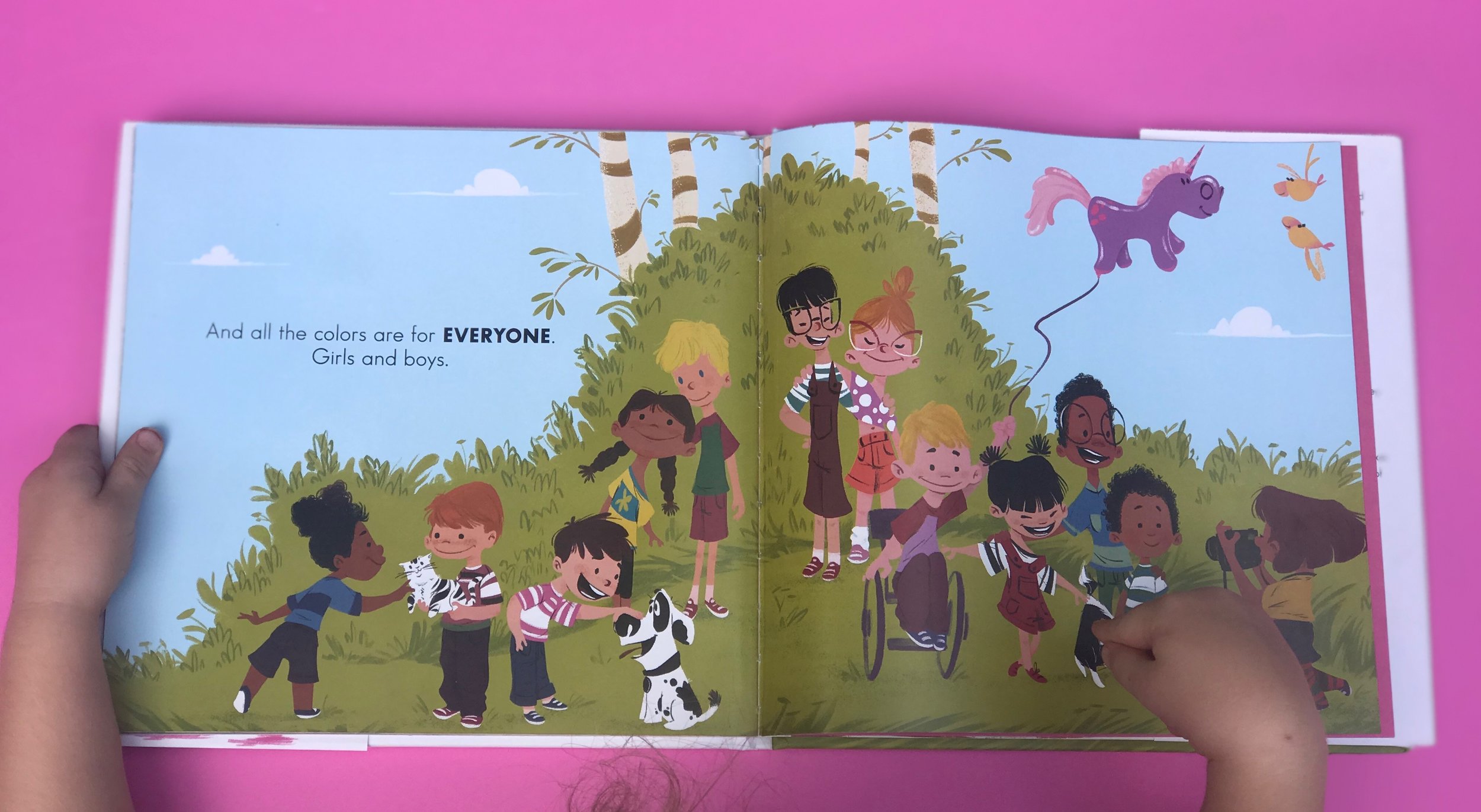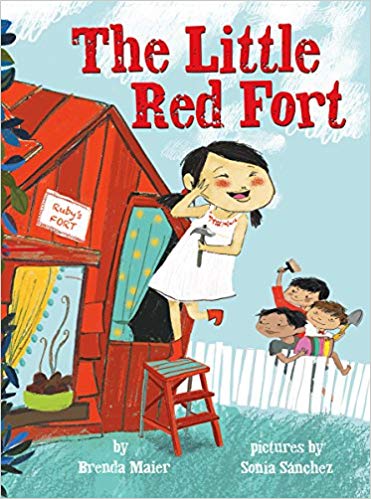

Even the examples for pink and blue reinforce stereotypical associations for the colors, since pink is for “bows on fancy clothes” and blue is for “uniforms on a team.” For a book that aims at inclusiveness, this one misses the bull’s-eye. And girls” leaves out anyone who might not fit those categories until the end. Although the book shares the message that “all colors are for everyone,” the lead-up to this conclusion perpetuates the notion that gender is binary. Colored type that corresponds with the name of each introduced color encourages young readers to participate in the story. Kaban’s illustrations of children dancing, running, and flying on winged unicorns add an element of liveliness to keep the repetition from turning stale.

Each color is presented in simple, repetitive text on verso (alternating which gender as specified first) with a vignette on recto and then on the next, full-bleed double-page spread. And girls.” For each new color, Pearlman shares an example of where to find the color: on sports uniforms, crowns, race cars, and teddy bears. With simple text and vibrant illustrations of racially diverse children playing together, this book introduces 10 colors “for boys. Pink, blue, yellow, and orange-all colors that are for boys, girls, popsicles, and unicorns.


 0 kommentar(er)
0 kommentar(er)
